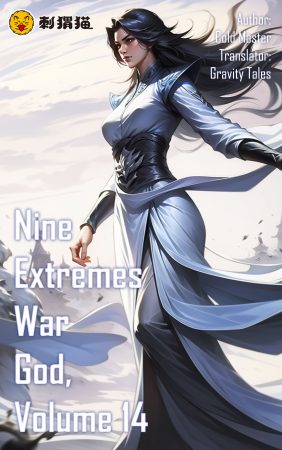Chapter 130
Our Discord Server: https://discord.gg/PazjBDkTmW
You can buy coins here to unlock advanced chapters: https://gravitytales.com/coins-purchase-page/
Chapter 130: Battle Energy Laser Gun
The sound of gunfire from the shooting practice around suddenly ceased, and the shooting range fell into complete silence. Such overwhelming power transcended the concept of light weapons.
"What the hell! Captain Lin, are you testing a laser cannon?"
"What kind of weapon was that? I thought I saw a flash of light."
"Is that a particle beam? What new weapon is this?"
Lin Mo’s attack power at the target drew the attention of those nearby.
Without needing Lin Mo to call for it, the Gold Coin quickly reverted to its original form, transforming back into the watch on his wrist.
"Haha, no worries, just testing the laser gun!" Lin Mo explained to the curious onlookers, waving his 95L-5B laser rifle.
Upon seeing it, everyone realized Lin Mo was indeed testing the laser rifle. They were well aware of its pros and cons—fun to play with, but too limited for battle. However, the immense power was astonishing.
"Captain Lin, you aren’t modifying it, are you?" The officer in charge of the shooting range scanned Lin Mo’s 95L-5B laser rifle and was startled by the earlier explosive noise from the wall. He kindly asked, "Would you like me to set up a dedicated heavy weapons range? This wall can’t withstand too much of your experiments."
"No, no, I’m done testing. I’ll return the rifle now," Lin Mo quickly thanked him, intending to take the 95L-5B laser rifle back to his room to disassemble.
The gold giant dragon could shift its form to create lenses and resonators, and it contained a super Farad capacitor that could store magnetic energy as electricity, so power supply was not an issue. Moreover, the super Farad capacitor could support instant high output, allowing for unlimited firing as long as the Gold Coin wished.
Lin Mo sneakily disassembled the 95L-5B laser rifle. It bore no significant difference from most lasers—it used a solid-state laser assembly, compact yet sturdy, capable of supporting high power output. The ruby laser rod and high-reflectivity resonator could be readily evolved, and excitation sources could include krypton arc lamps, iodine tungsten lamps, potassium rubidium lamps, or even directly employ Lin Mo’s Battle Energy.
The gold giant dragon attempted several times and barely managed to release some low-power laser beams. However, compared to the direct output power and lethality of Lin Mo’s Battle Energy, the latter stood out, being the purest form of active energy.
To test its effectiveness, Lin Mo ordered various laser rods, frequency-doubling resonators, and lower power semiconductor, gas, and infrared lasers online for destructive disassembly experiments.
After a week of testing and research, Lin Mo’s dedicated heavy weapons range became tragically ravaged. The laser gun evolved by the gold giant dragon achieved considerable power, surpassing that of the 95L-5B laser rifle. It even blasted a large hole into specially designed high-temperature graphite refractory brick walls. The oxidized wall caused smoke to billow throughout the range, and the temperature soared alarmingly due to the molten graphite refractory bricks.
Satisfied after a thrilling experiment, Lin Mo returned the nearly ruined 95L-5B laser rifle to the Equipment Group. The repair manufacturer would likely be exasperated, possibly unwilling to fix it and opting to simply replace it with a new one.
During his last mission and downtime, Lin Mo followed the directives of the "Night" Special Forces, entering a low-profile dormant phase. He occasionally undertook minor tasks while indulging in military technology, studying aircraft design alongside retired expert Yan Guoqiang from the 611 Institute, tinkering with laser weapons, or creating small gadgets.
The higher-ups in "Night" kept a close watch on Lin Mo’s every move, intrigued by how he managed to befriend the retired expert from the 611 Institute. A designer meeting a pilot was a perfect match.
Due to security protocols, both national security and "Night" separately verified with Uncle Yan and Lin Mo, documenting the case without further interference since any confidential matters fell well within their security clearance, ensuring no breaches occurred.
Uncle Yan, spending his leisure time at the computer, eagerly awaited Lin Mo’s emails. His previously mundane life became vibrant as he provided one-on-one guidance, greatly enhancing Lin Mo’s learning speed. With real aircraft for reference and expert one-on-one instruction, Lin Mo thrived. The supercomputer group at the "Night" base boasted extensive redundant computing power, which benefited Lin Mo directly. It was specifically used for aerodynamic wind tunnel simulation calculations, with programs directly sourced from the 611 Institute and large wind tunnel labs.
In the whole world, few students could claim better learning conditions than Lin Mo. Additionally, as a J-10 pilot, every modification proposal directly reached the manufacturers at Chengdu Aircraft Industrial Group. Because he was the student of a retired 611 Institute expert, updates were also systematically communicated back to the 611 Institute for reference in research.
Lin Mo remained unaware that his learning and modifications to the J-10 influenced two significant military industrial units. Both Chengdu Aircraft and the 611 Institute were synchronizing modifications on a completely new J-10 alongside Lin Mo. He was also oblivious to the immense value his adaptations brought to combat effectiveness.
Even the gold giant dragon benefitted greatly. As the aerial overlord of the dragon kin, improvements in aerodynamic efficiency directly enhanced its flight speed, a crucial advantage for flying species.
Modifying fighter jets wasn’t something just anyone could afford; Lin Mo’s reputation as an avid DIY aircraft aficionado quietly spread through various aircraft research institutes.
Thanks to the gold giant dragon occasionally checking and maintaining Lin Mo’s J-10, it remained in optimal condition, likely postponing major repairs on the single AL-31FN vector engine indefinitely.
Lin Mo’s learning approach significantly differed from the collaborative academic and research paths at major military design institutes; he focused purely on performance superiority. Each change in aerodynamic shape influenced the fighter jet’s performance advantage in specific aspects. He disregarded production costs altogether, and without material and cost restrictions, his liberated thinking led to astonishing ideas that left even the retired 611 Institute expert Uncle Yan praising Lin Mo’s talent in aircraft design.
In reality, this play-acting on paper posed no risk of information security breaches, as it lacked feasibility. It might have some value as a commercial animation design.
Uncle Yan, however, didn’t realize that his student was a dragon knight with extensive flying experience from another realm. Knowledge about flight was imprinted into his very bones, and aerodynamic design was one of the knowledge systems tailored for him.
Various calculations indeed required effort, but for the gold giant dragon, it posed no problem. Having integrated computer functionality, it provided Lin Mo with rapid computational services.
Multiple designs crafted by Lin Mo were even taken by national security as disguise plans to deceive spies or serve as false intelligence in resource exchanges. The combination of a professional fighter pilot and a true aircraft designer created new model blueprints, lacking real value but possessing considerable deception value.
As for viability, that was another matter altogether; should anyone take it seriously, the development costs would likely exceed the F-35’s by an unknown factor since some technologies and materials would never meet requirements.
Neither of the involved parties fathomed that their casual exercises would yield such implications.
Whether described as ambitious or wildly ambitious, Lin Mo began preparing to personally create and design an experimental aircraft.
At first, Uncle Yan thought Lin Mo was joking. He had seen the final draft that Lin Mo designed for a forward-swept variable wing heavy fighter.
Compatible with both diving and climbing maneuvers, this variable wing combined with forward-swept wings presented a diamond pentagonal cross-section with five peak angles. Weighing twenty-one tons, the semi-enclosed high-overload single-seat cockpit featured a transparent canopy not only on top but also on the left and right leg areas, providing excellent visibility. It was powered by twin vector super engines, had a maximum range of 4000 kilometers, could reach speeds of 5-7 Mach in supersonic flight, withstand up to 15G of overload, and attain altitudes of 25 kilometers, even capable of escaping the troposphere.
This idea was utterly insane, and it was hard to imagine what kind of pilot could operate such a monstrous fighter jet; a normal person stepping inside would probably turn into a puddle of goo in no time.
Uncle Yan conceded that this dream aircraft indeed showcased exceptional maneuverability and combat capabilities. It was not an exaggeration to call it the perfect model within the atmosphere; if truly manufactured, it would be a case of planes chasing missiles, not the other way around.
Due to the relentless pursuit of perfection, Lin Mo completely disregarded manufacturing costs. Uncle Yan, caught up in the excitement, enthusiastically joined in on the fun. After all, it was meant to be entertaining. Lin Mo wasn’t a legitimate aircraft designer, but once he grasped the fundamentals, he could transition to a real designer without much trouble.
What started as mere theoretical discussions turned into a quest for perfection. Uncle Yan, showcasing his enduring skills, even sent the blueprints to various fellow designers, collaborating to optimize Lin Mo’s aircraft profile until they developed this dream model.
When Uncle Yan heard Lin Mo was ready to begin prototype production, he thought he must have misheard. He was intimately familiar with every detail of the design; producing it would likely be cost-prohibitive, and even those with the deepest pockets like the United States would struggle to finance the development of such a fighter jet, let alone the fact that many technologies and materials would be unattainable.












